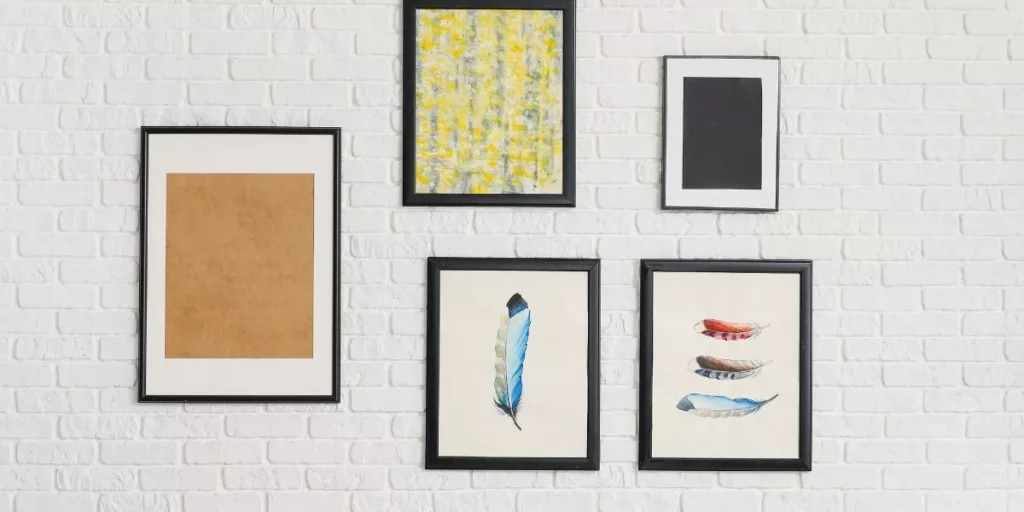
When aiming for a contemporary ambiance in your living space, think about how abstract wall art can elevate the overall aesthetic. Vibrant acrylic paintings or intricate metal sculptures can inject a sense of modern flair, but the key lies in selecting pieces that resonate with your style and existing decor. Embracing bold colors and experimenting with textures can transform a room, adding layers of visual intrigue. But remember, it’s not just about the art itself; how you arrange and display these pieces can truly make or break the contemporary vibe you’re aiming for.
Types of Abstract Wall Art
When selecting abstract wall art, consider exploring various types such as acrylic paintings and metal sculptures. Acrylic paintings offer vibrant colors and bold textures that can add a dynamic element to your space. The versatility of acrylics allows artists to create a wide range of styles, from minimalist and modern to abstract expressionism. These paintings can be a focal point in a room or complement existing decor with their unique aesthetic.
Metal sculptures, on the other hand, provide a three-dimensional aspect to your walls. The play of light and shadows on metal surfaces can create captivating visual effects, adding depth and intrigue to your space. Sculptures crafted from materials like steel or aluminum offer a contemporary and industrial feel, while those made from copper or bronze can bring warmth and elegance to your surroundings.
Choosing the Right Colors
To create a harmonious and visually appealing space with abstract wall art, consider selecting colors that resonate with your personal style and complement your existing decor. Start by identifying the dominant colors in your room and choose abstract art pieces with complementary or contrasting hues to add depth and interest.
If your space features neutral tones, opt for vibrant abstract pieces to inject energy into the room. Conversely, if your decor already includes bold colors, select abstract art with more subdued tones to balance the overall aesthetic.
When choosing colors for your abstract wall art, think about the mood you want to evoke in the room. Cool tones like blues and greens can create a calming atmosphere, while warm tones like reds and oranges can add a sense of coziness and warmth. Don’t be afraid to mix and match colors to create a dynamic and personalized look that reflects your individual style.
Incorporating Textures and Layers
Consider adding depth and visual interest to your abstract wall art by incorporating a variety of textures and layers. Textures can range from smooth and glossy to rough and matte, adding dimension to your piece. Experiment with different materials like acrylic paints, modeling paste, or even collage elements like fabric or paper to create layers that catch the light in unique ways.
Mixing textures can create a dynamic contrast that draws the eye and adds complexity to your artwork. For example, pairing a smooth, metallic texture with a rough, tactile one can create a striking visual impact. You can also use layering techniques to build up depth in your piece, adding depth and richness to the overall composition.
Placement and Arrangement Tips
For a visually balanced display, ensure that your abstract wall art pieces are spaced evenly and complement each other in terms of color and size.
Start by laying out your artwork on the floor first to experiment with different arrangements before hammering any nails. Consider the overall aesthetic you want to achieve – whether you prefer a symmetrical look or a more eclectic feel.
When hanging multiple pieces, maintain a consistent distance between each artwork to create a cohesive look. A good rule of thumb is to space the center of each piece about 57-63 inches from the floor, keeping eye level in mind for optimal viewing.
If you have a large blank wall, a gallery wall featuring a mix of sizes and shapes can add visual interest. Remember that the artwork should relate to the furniture below it, so consider the arrangement concerning the surrounding décor.
Trending-Product








![Fab totes Storage Bins [3-Pack], Foldable Storage Baskets for Organizing Toys, Books, Shelves, Closet, Large Storage Box with Rope Handles, Sturdy Organizer Bins, White & Grey](https://m.media-amazon.com/images/I/41PR0XyTeGL._SS300_.jpg)





